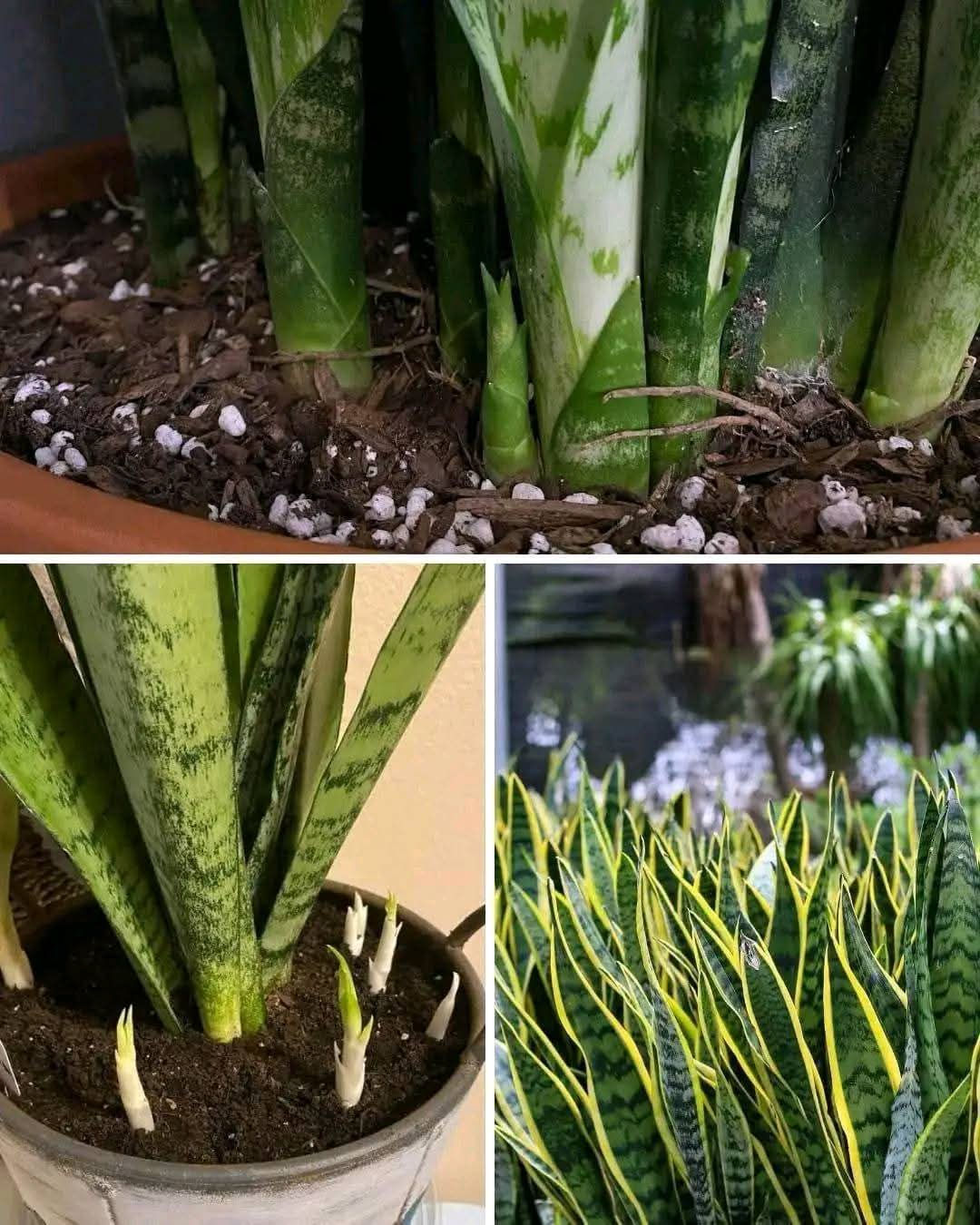Snake plants (Sansevieria) are some of the easiest and most resilient houseplants to grow, but getting them to produce more pups (offsets) requires a bit of strategy. These pups grow from rhizomes, underground stems that send out shoots, forming new plants. If you want to multiply your snake plant naturally, follow these proven tricks to stimulate pup production.
Use a Gritty Soil Mix for Faster Growth
Snake plants thrive in well-draining, gritty soil that mimics their natural dry environment. The right mix encourages strong rhizome development, which leads to more pups.
✔ Basic Soil Mix:
1 part cactus soil (provides nutrients)
1 part coarse sand (improves drainage)
1 part perlite (enhances aeration)
✔ Advanced Soil Mix for Maximum Growth:
1 part crushed granite or poultry grit (prevents compaction)
1 part orchid bark (boosts airflow around roots)
1 part potting soil or coconut coir (holds some moisture without being too dense)
💡 Why It Works: Snake plants spread through rhizomes, and a gritty mix allows them to expand easily, preventing waterlogging, which can slow growth.
Mimic Natural Temperature Fluctuations
In their native environment, snake plants experience warmer days and cooler nights. This temperature shift stimulates rhizome activity, leading to more pups.
✔ Daytime: Keep your snake plant in a warm spot (70-85°F / 21-29°C) with indirect sunlight.
✔ Nighttime: Move it to a cooler area (60-65°F / 16-18°C) or near an open window for temperature variation.
💡 Why It Works: The change between warm and cool temperatures triggers the plant to produce new rhizomes, which sprout into pups.
Let the Roots Get Slightly Root-Bound
Snake plants tend to produce more pups when slightly root-bound in their pots. When the roots run out of space, the plant shifts energy toward producing new growth (pups) instead of expanding its roots.
✔ Choose a snug pot that’s just 1-2 inches wider than the root ball.
✔ Wait until roots fill the pot before repotting—this forces the plant to create more offsets.
💡 Why It Works: Limited root space signals the plant to spread out by growing pups rather than expanding its root system.
Stress the Plant Slightly (But Not Too Much!)
A little stress can actually encourage your snake plant to grow more offsets. Mild drought stress or a short period of lower light can signal the plant to spread via rhizomes for survival.
✔ Skip watering for 2-3 weeks to let the soil dry out completely.
✔ Move to a slightly lower light area for a short period (without completely depriving it of light).
💡 Why It Works: Snake plants react to slight stress by reproducing through pups, ensuring their survival in tough conditions.
Increase Sunlight Exposure
Although snake plants can survive in low light, they thrive in bright, indirect sunlight. More light = more energy for pup production.
✔ Move your snake plant to a bright spot with indirect or filtered sunlight (east- or west-facing windows work well).
✔ Avoid direct scorching sun, which can damage leaves.
💡 Why It Works: More sunlight encourages stronger growth and faster rhizome development, leading to more offsets.
Use the Right Fertilizer (But Sparingly!)
Snake plants don’t need a lot of fertilizer, but the right type and amount can boost pup production.
✔ Use a balanced fertilizer (like 10-10-10 or 20-20-20 diluted to half strength).
✔ Apply only during the growing season (spring and summer, once a month).
✔ Avoid over-fertilizing, which can cause root damage instead of encouraging growth.
💡 Why It Works: Proper fertilization provides essential nutrients without overwhelming the plant, allowing it to focus on rhizome and pup growth.
Divide & Repot Pups to Stimulate More Growth
Once your snake plant produces pups, you can separate and replant them to encourage even more offsets.
✔ Wait until the pup has at least 3-4 leaves before separating.
✔ Use a sharp, sterilized knife to cut the rhizome connecting it to the parent plant.
✔ Plant the pup in a new pot with a well-draining soil mix.
💡 Why It Works: Removing pups reduces competition for nutrients, allowing the parent plant to redirect energy into growing new ones.
Final Thoughts: Growing More Snake Plant Pups the Smart Way
By optimizing soil conditions, temperature changes, light exposure, and strategic stress, you can maximize your snake plant’s ability to produce pups. Whether you want to fill a pot with new growth or propagate new plants, these techniques will help you get more offsets quickly and naturally.
Try these tricks and watch your snake plant multiply effortlessly!
More Articles You Might Like
-
Texas Toast Sloppy Joes: The Crunchy, Cheesy Upgrade You Didn’t Know You Needed
There’s something timeless about sloppy joes. For generations, this saucy, savory, and slightly sweet ground beef sandwich has been a go-to comfort food in American kitchens. It’s quick, filling, and family-friendly—perfect for busy weeknights. But what if we told you there’s a way to take this classic dish up a notch? Enter the Texas Toast…
-
Classic Pig Pickin’ Cake
When it comes to Southern desserts, few sweets shine as brightly as the Classic Pig Pickin’ Cake. This nostalgic cake, sometimes called a “Mandarin Orange Cake,” has roots deep in Southern tradition. It gets its playful name from its frequent appearance at pig pickin’s—Southern-style barbecue gatherings where communities come together to enjoy slow-cooked pork, sides,…
-
Lemon Garlic Butter Chicken with Creamy Parmesan Pasta
There’s something irresistible about the combination of tender, golden-browned chicken paired with a creamy pasta coated in Parmesan cheese. Add the brightness of lemon, the depth of garlic, and the richness of butter, and you have a recipe that feels indulgent yet approachable enough for a weeknight dinner. Lemon Garlic Butter Chicken with Creamy Parmesan…



